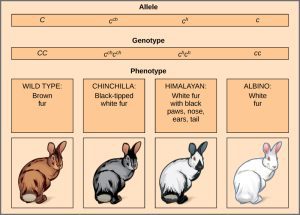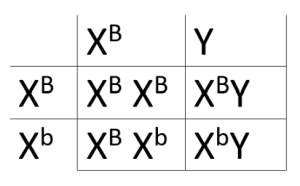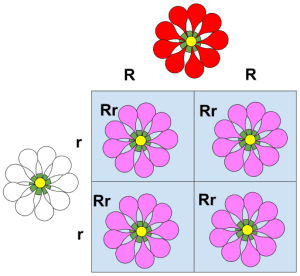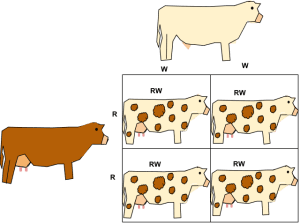Exploring Non-Mendelian Genetics: Unraveling the Complexity of Inheritance
Genetics is much more complex than simple dominant and recessive traits. While Gregor Mendel’s groundbreaking work laid the foundation of genetics, most traits do not adhere strictly to Mendelian inheritance patterns. Instead, these traits are categorized as Non-Mendelian genetics, which includes several fascinating inheritance patterns like multiple alleles, sex-linked traits, incomplete dominance, and codominance. In this post, we’ll dive into these unique genetic variations, understanding how they shape the diversity we observe in nature.
1. Multiple Alleles: More Than Just Dominant and Recessive
Unlike Mendelian traits, where each gene has just two versions—dominant and recessive—multiple alleles involve more than two variations of a gene. These different versions can significantly impact the phenotype, leading to greater diversity.
A well-known example is human blood type, where three alleles (A, B, and O) determine blood type, resulting in four possible blood groups: A, B, AB, and O. Similarly, fur color in certain rabbit species is influenced by multiple alleles, leading to a range of color patterns. The diagram below illustrates how different combinations of alleles (C, cch, ch, and c) influence the fur color phenotype in rabbits.

2. Sex-Linked Traits: Genes on the X and Y Chromosomes
Sex-linked traits are those that are carried on a sex chromosome, usually the X chromosome. These traits are unique because males (who have only one X chromosome) are more likely to inherit these disorders compared to females. Since females have two X chromosomes, they can be heterozygous for a recessive sex-linked trait without expressing the condition themselves.
Two common examples of sex-linked disorders are color blindness and hemophilia. In the Punnett square example below, a mother who is heterozygous for color blindness (XBXb) and a father with normal color vision (XBY) can have offspring with a range of outcomes. Sons are more likely to be colorblind if they inherit the affected X chromosome, while daughters can become carriers.

3. Incomplete Dominance: A Blend of Traits
In some cases, neither allele is completely dominant, leading to incomplete dominance. Here, the heterozygous phenotype is a blend of both alleles. A great example of this is flower color in certain plants. When a red flower is crossed with a white flower, the resulting offspring may be pink because neither the red nor the white allele fully dominates the other.

This blend of traits shows how incomplete dominance can add complexity and variation to inheritance. The intermediate phenotype is a unique feature of incomplete dominance, distinct from the usual dominant-recessive relationship.
4. Codominance: Equal Expression of Both Alleles
Codominance occurs when both alleles in a heterozygous individual are equally expressed. Rather than blending together, both traits appear simultaneously, much like co-captains sharing responsibility. A classic example of codominance is coat color in cattle, where some cows have red and white fur, resulting in a roan pattern.

In codominance, neither allele takes precedence, and the result is a phenotype where both parental traits are visible without blending—highlighting how genetic expression can be shared equally between alleles.
5. Non-Nuclear Inheritance: Beyond the Nucleus
Inheritance is not always tied to nuclear DNA. Non-nuclear inheritance refers to the inheritance of genetic material from organelles like mitochondria and chloroplasts. This type of inheritance is typically maternal, meaning that offspring inherit traits only from the mother’s mitochondria or chloroplasts.
Mitochondrial DNA is passed down exclusively through the maternal line, as mitochondria in sperm do not survive after fertilization.
Chloroplasts, which are crucial for photosynthesis in plants, are also inherited maternally.
These non-Mendelian inheritance patterns ensure that some traits, especially those tied to essential functions like energy production, are passed down consistently through generations.
Why Non-Mendelian Genetics Matters
Understanding Non-Mendelian genetics is crucial because it reveals the incredible complexity of heredity. Most human traits—such as blood type, color blindness, or fur color in animals—are not determined by simple dominant-recessive relationships. By grasping these more complex inheritance patterns, we can better appreciate the diversity of life and understand how genetic traits are passed down in a way that Mendel’s initial experiments couldn’t fully explain.
Key Takeaways for Your AP Biology Exam
Multiple Alleles lead to a wider range of phenotypes, as seen in human blood types.
Sex-Linked Traits are often X-linked, making males more susceptible to certain recessive disorders.
Incomplete Dominance results in a blended phenotype, while Codominance expresses both alleles fully.
Non-Nuclear Inheritance shows that not all traits are passed through nuclear DNA; mitochondrial DNA is always inherited maternally.
Remember, genetic diversity is the driving force behind evolution. Non-Mendelian genetics contributes significantly to the variation that natural selection acts upon, helping populations adapt to changing environments.







